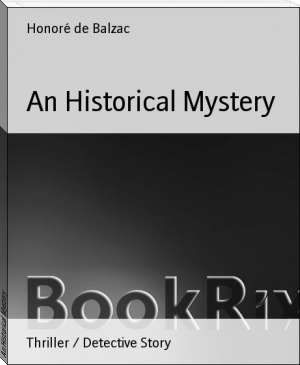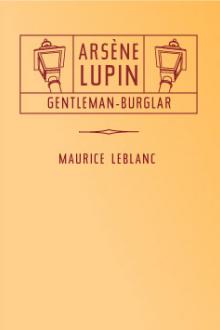The Forgotten Painting, Gabriel Farago [book recommendations for young adults .TXT] 📗

- Author: Gabriel Farago
- Performer: -
Book online «The Forgotten Painting, Gabriel Farago [book recommendations for young adults .TXT] 📗». Author Gabriel Farago
‘What do you mean?’
‘Well, there was this German officer who visited the camp regularly. He used to come to the train station with his dog and often spoke to us about music before the trains arrived and the selections were made. He was always looking for new arrivals with certain special skills. They were taken to another camp close by. He had a dog just like this one.’ Finkelstein pointed to the snarling beast in the photo. ‘The dog had an unusual metal collar with an inscription on it’, he explained.
‘What inscription?’ Jana asked hoarsely.
‘Ah, yes, I do remember now: Arbeit macht frei. Crazy. We didn’t know what to make of it. Typical SS, they were all mad.’
Jana could barely contain her excitement. 'Is there anything else you can remember about him?’ she asked hopefully.
‘Not really. It was a long time ago and my memory isn’t what it used to be, I’m afraid.’ Finkelstein shrugged, and handed the photograph back to Jana.
‘Do you know of anyone else who might?’ she asked casually, almost as an afterthought.
‘Strange you should ask; I was just thinking the same thing… There was this musician at the Auschwitz remembrance service—you know the fiftieth anniversary of the camp’s liberation. I was there.’
‘What about him?’
‘Well, as a young boy he used to play in the camp orchestra with his father. Perhaps he can remember something. You see, he survived—his father didn’t. I spoke to him afterwards. It was all very moving.’
‘Did you recognise him?’
‘No, but I did remember his father. He was a well-known violin virtuoso and music teacher right here in Warsaw before the war.’
‘What was his name?’
‘I knew you would ask that. I’m sorry, but I just can’t remember right now’, said Finkelstein apologetically. ‘I’m rather bad with names…’
‘But you must!’ Jana almost shouted, unable to control her frustration. She put her hand on the old man’s shoulder. He shook his head sadly. Embarrassed, Jana withdrew her hand.
‘Wait, there is someone who might know’, said Finkelstein, waving his finger at Jana. ‘My friend Moritz was with me at the liberation ceremony. We spoke a lot about it at the time; he might remember the name.’
‘Where’s your friend?’
‘He lives close by; we play chess almost every day. I will ask him in the morning. Why don’t you come back tomorrow and we’ll see…’
* * *
‘When I returned to Finkelstein’s shop with Jana Gonski the next morning,’ continued Jack, ‘we found the old man lying face down, the back of his skull crushed. On the floor next to his head was a piece of marble covered in blood. All the clocks in the ransacked room had been smashed to pieces. The floor was littered with broken glass, twisted pendulums, dented brass weights, steel springs and splinters of wood. Finkelstein had been murdered during the night. Why it had happened was a separate, complicated matter linked to our investigation, but we managed to discover the name he couldn’t remember the night before. The name was Benjamin Krakowski, a vital lead in our case.’ Jack paused, letting this remarkable revelation find its mark.
‘Little did I know at the time,’ said Jack, speaking softly, ‘that a few months later, I would come across that name again in a totally unrelated matter,’ Jack held up the little notebook, ‘in here, in Brother Francis’ diary. And little did I know at the time what that would lead to, and how. Destiny, and fate—’
A young woman in the audience held up her hand.
‘Please’, said Jack, grateful for the interruption.
‘Cecilia Crawford, New York Times’, said the woman, standing up. ‘You may not remember, but I spoke to you in New York after the release of your book, Dental Gold and Other Horrors—’
Jack smiled. How could I forget, he thought, remembering the stunning, well-informed reporter who had given him a polite grilling about his book. 'I do remember,’ interrupted Jack. ‘The press conference in Central Park.’
‘Yes’, replied the woman, obviously pleased. ‘Are you suggesting that Mr Krakowski here is the same man who features in your book and was the key witness in the trial of Sir Eric Newman, alias Sturmbannfuehrer Wolfgang Steinberger, the notorious Nazi war criminal?’
‘I know this may be difficult to accept, but yes, he’s the same man.’
Crawford shook her head and sat down.
‘As you can imagine,’ continued Jack, ‘I hurried back to my hotel room in Berchtesgaden to examine what I had just found. Despite the metal box and the waterproof wrapping, it soon became apparent that the diary had been significantly damaged. Not only was the small, spidery handwriting difficult to decipher, but the ink had almost completely faded away in certain places, and water damage had destroyed several pages.
‘My limited German was totally inadequate to make sense of what was left, so I had the text translated by an expert. Slowly, line by line, I began to piece together an extraordinary story about an interesting, complex man. It was the beginning of an exciting journey of discovery with many twists and turns that finally brought us right here, to this very moment.
‘It all began in 1939, with the first entry.’ Jack held up a sheet of paper. ‘I have the translation right here’, he said. ‘Let me read it to you: Today, at 10 a.m., I joined the Nazi Party. A glorious future awaits Germany, and I look forward with pride to my contribution to my country’s destiny. Potent words indeed, ladies and gentlemen, especially in light of what was to come.
‘But before going any further, I must point out something significant that may have a bearing on everything I’m telling you. The true identity of the author of this diary is not known. There is no name or any other form of identification, or clue in the text. There is only one link: Brother Francis. However, I do believe it is reasonable to assume that he is the author, and if you will allow me, I would like to proceed on that basis.
‘The Coberg Mission closed down many years ago and I was unable to discover who Brother Francis really was. However, in hindsight, it has become clear to me that the brothers I met at the mission all those years ago were all high-ranking SS officers who had joined the Order to escape Germany after the war under a cloak of protection provided by the Church. The discipline I had observed at the mission as a boy wasn’t monastic, it was military.
‘According to the diary, soon after joining the Nazi Party, Brother Francis joined the SS and advanced rapidly through the ranks. He even became a member of the notorious LeibstandarteSS Adolf Hitler, Hitler’s personal bodyguard, and spent a lot of time on the Obersalzberg near Berchtesgaden, close to Hitler’s inner circle of power. What is particularly relevant to our story here is the fact that he was one of the senior SS officers in charge of putting down the Warsaw Ghetto revolt in 1943.
‘Until the middle of 1944, the tone of the entries is very enthusiastic, even bombastic about what was happening in Germany. The atrocities, the defeats, the disasters are all seen as part of a bigger picture: the struggle of the glorious Reich, destined for victory.
‘However, towards the end of 1944, something significant must have occurred, because things begin to change—dramatically. Suddenly, there is a drastic shift in the tone of the entries. Blind optimism and unquestioning loyalty and belief are replaced by doubt and fear. Some of the entries are almost incoherent and often written days, if not weeks after the event. Entries become fewer and fewer, the gaps wider. By Christmas, they cease altogether; nothing until January 1945, only silence.
‘Then, on the twenty-eighth of January, something curious happens; a writing frenzy. Obviously jotted down in a great hurry—the changes in the handwriting support this—the entries deal with only one subject: the Warsaw Ghetto revolt of 1943 and the part played by the author—let’s call him Francis—in crushing it. He describes the brutality and the atrocities in graphic detail and the tone is one of regret and despair. However, one particular event stands out, and he deals with it over and over as if putting down what had happened on paper could make it undone. The event? Sending the Krakowski family to a concentration camp to face certain death, and then stealing the only thing of value left behind in their miserable home: a painting.’
Jack paused again and looked at the audience, the stunned expressions on many of the faces a clear indication that this surprising revelation had found its mark.
‘So why not just get rid of this painting that appears to have caused so much soul-searching and regret and be done with it? Why single out this particular incident, which would have been one of many? I thought a lot about this, and the most plausible explanation I could come up with was this: before joining the Nazi Party, Francis was an art teacher in Munich. The diary is clear about this. He knew and appreciated art, and therefore recognised the true significance and value of this painting. It resonates with him. That is why he couldn't just dispose of it, and in January 1945, he still has the painting,’ continued Jack, ‘only by now it has become a burden, an accusing reminder of what he has done.
‘He sinks deeper and deeper into despair and becomes obsessed with one particular subject: returning the painting to where it belongs; its rightful owner. Of course this makes no sense in light of what has happened, but he is no longer rational or coherent, only obsessed. It is as if the salvation of his tortured soul depended on this.
‘Then suddenly, the entries stop again, only to resume once more for the last time in June 1945. Francis is in Vienna, on the run. The war is over and the Russians have occupied the city. They are relentlessly hunting down the few armed combatants still roaming the ruins. To avoid being captured, Francis is hiding among the dead, literally. The place he has chosen is as ingenious as it is unique, and as it turns out, it serves him well: the magnificent Imperial Crypt, beneath the Capuchin Church on the NeueMarkt, the final resting place of the German and Austrian emperors. It is almost certain that the last entries in the diary were written in the crypt, and what transpired there is perhaps the most astonishing and intriguing aspect of this entire story.
‘After the Francis diary had been translated and I finished piecing the entries together, which took quite some time, I went to Vienna and visited that extraordinary crypt under the Capuchin Church. Let me tell you why …’
Imperial Crypt, Vienna: 2012Jack turned up the collar of his coat, pulled a street map out of his pocket and began to orientate himself, the numbing cold making his fingers stiff and clumsy. It must be right here, he thought, looking across the road at a small church of insignificant appearance. He had expected something grander, bearing in mind what was located under the Capuchin Church: the imperial vaults, within the stunning family crypt of the Habsburgs. Jack remembered the pamphlet he had downloaded earlier, pulled it out from his other pocket and began to read:
The first Capuchin fathers came to Vienna in 1599, and in 1617 the wife of Emperor Matthias, Empress Anna, granted the Capuchins a church that was to become the burial site for her and her husband. The foundation





Comments (0)